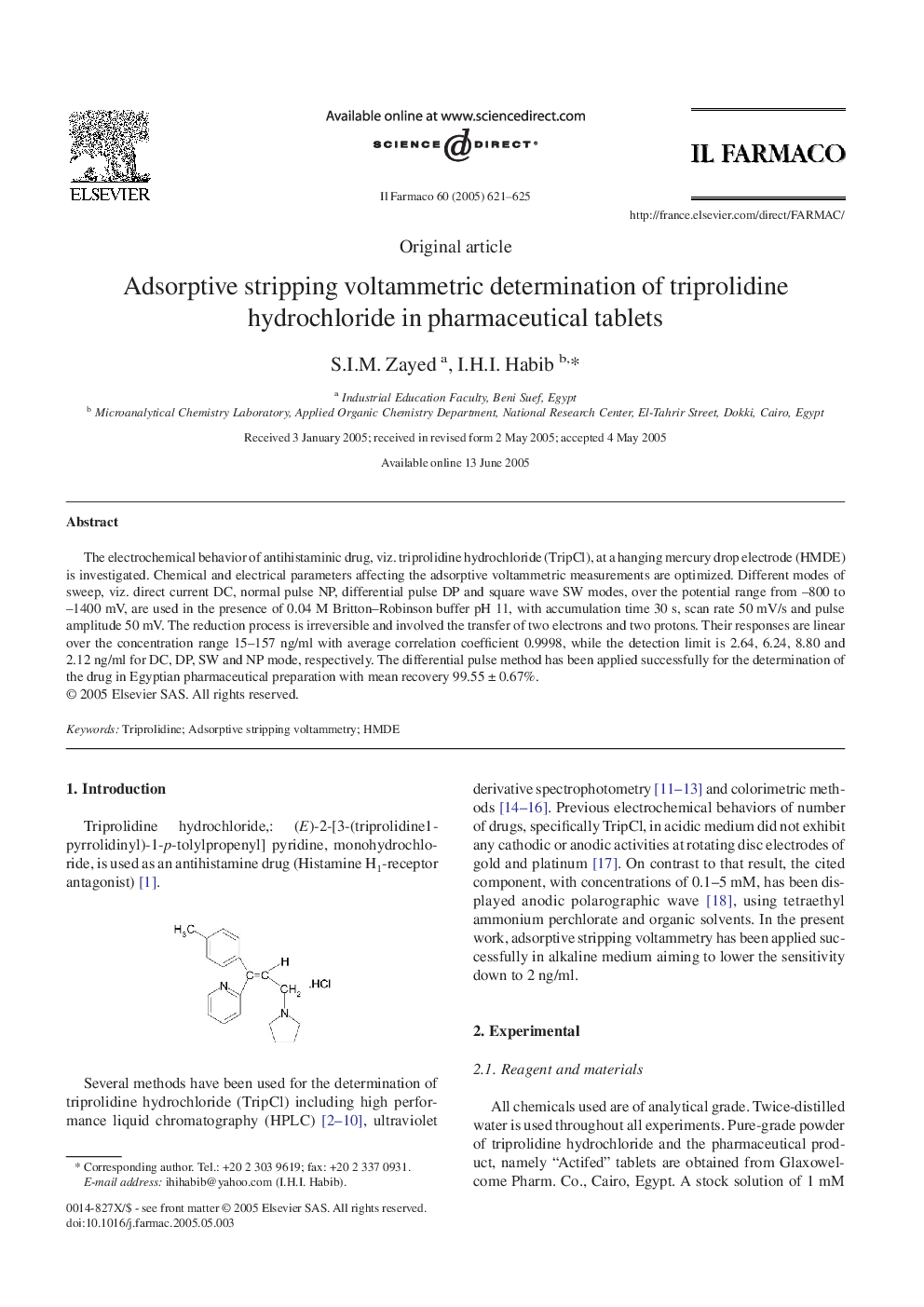| Article ID | Journal | Published Year | Pages | File Type |
|---|---|---|---|---|
| 8993381 | Il Farmaco | 2005 | 5 Pages |
Abstract
The electrochemical behavior of antihistaminic drug, viz. triprolidine hydrochloride (TripCl), at a hanging mercury drop electrode (HMDE) is investigated. Chemical and electrical parameters affecting the adsorptive voltammetric measurements are optimized. Different modes of sweep, viz. direct current DC, normal pulse NP, differential pulse DP and square wave SW modes, over the potential range from -800 to -1400 mV, are used in the presence of 0.04 M Britton-Robinson buffer pH 11, with accumulation time 30 s, scan rate 50 mV/s and pulse amplitude 50 mV. The reduction process is irreversible and involved the transfer of two electrons and two protons. Their responses are linear over the concentration range 15-157 ng/ml with average correlation coefficient 0.9998, while the detection limit is 2.64, 6.24, 8.80 and 2.12 ng/ml for DC, DP, SW and NP mode, respectively. The differential pulse method has been applied successfully for the determination of the drug in Egyptian pharmaceutical preparation with mean recovery 99.55 ± 0.67%.
Related Topics
Health Sciences
Pharmacology, Toxicology and Pharmaceutical Science
Drug Discovery
Authors
S.I.M. Zayed, I.H.I. Habib,
